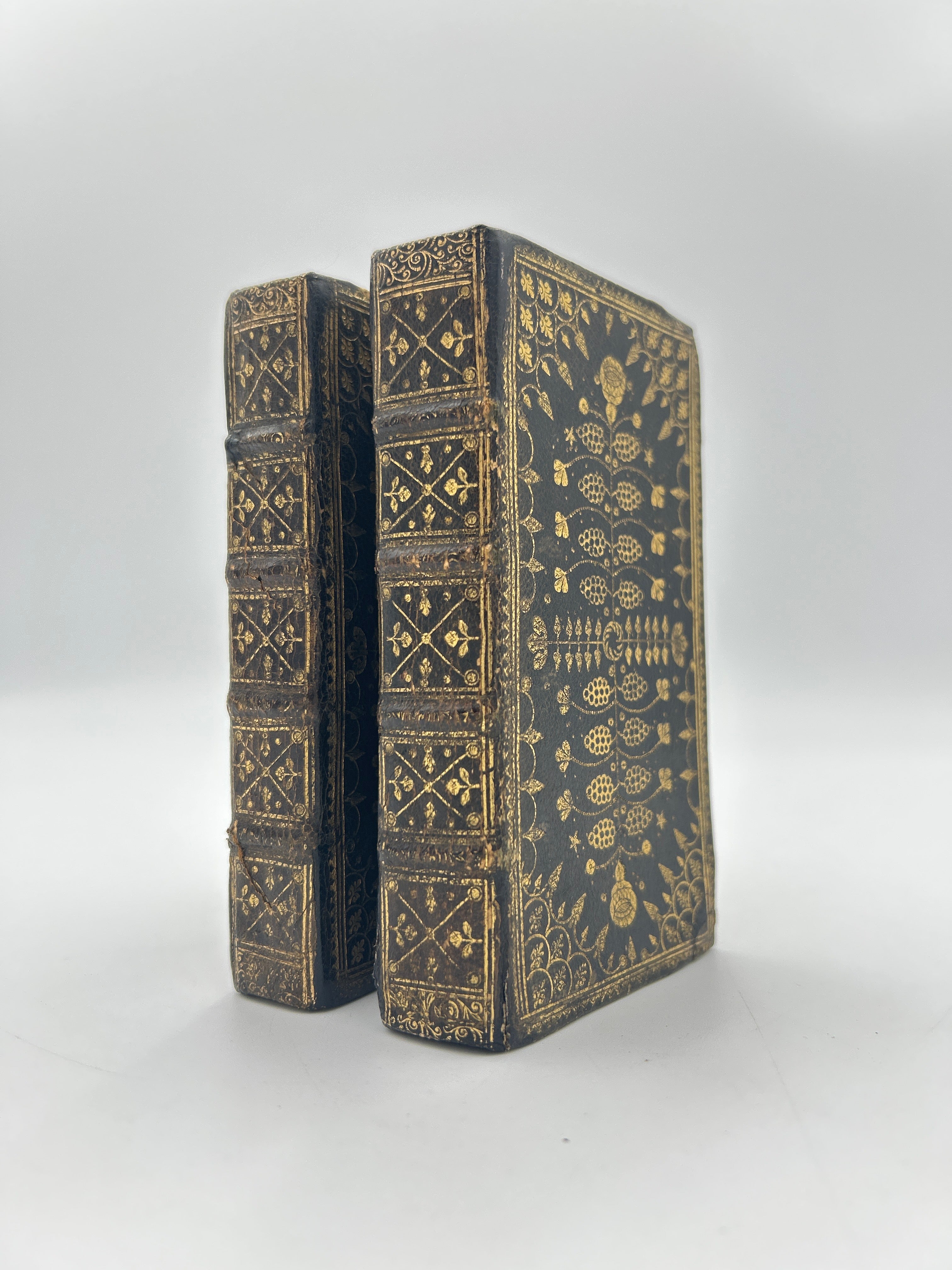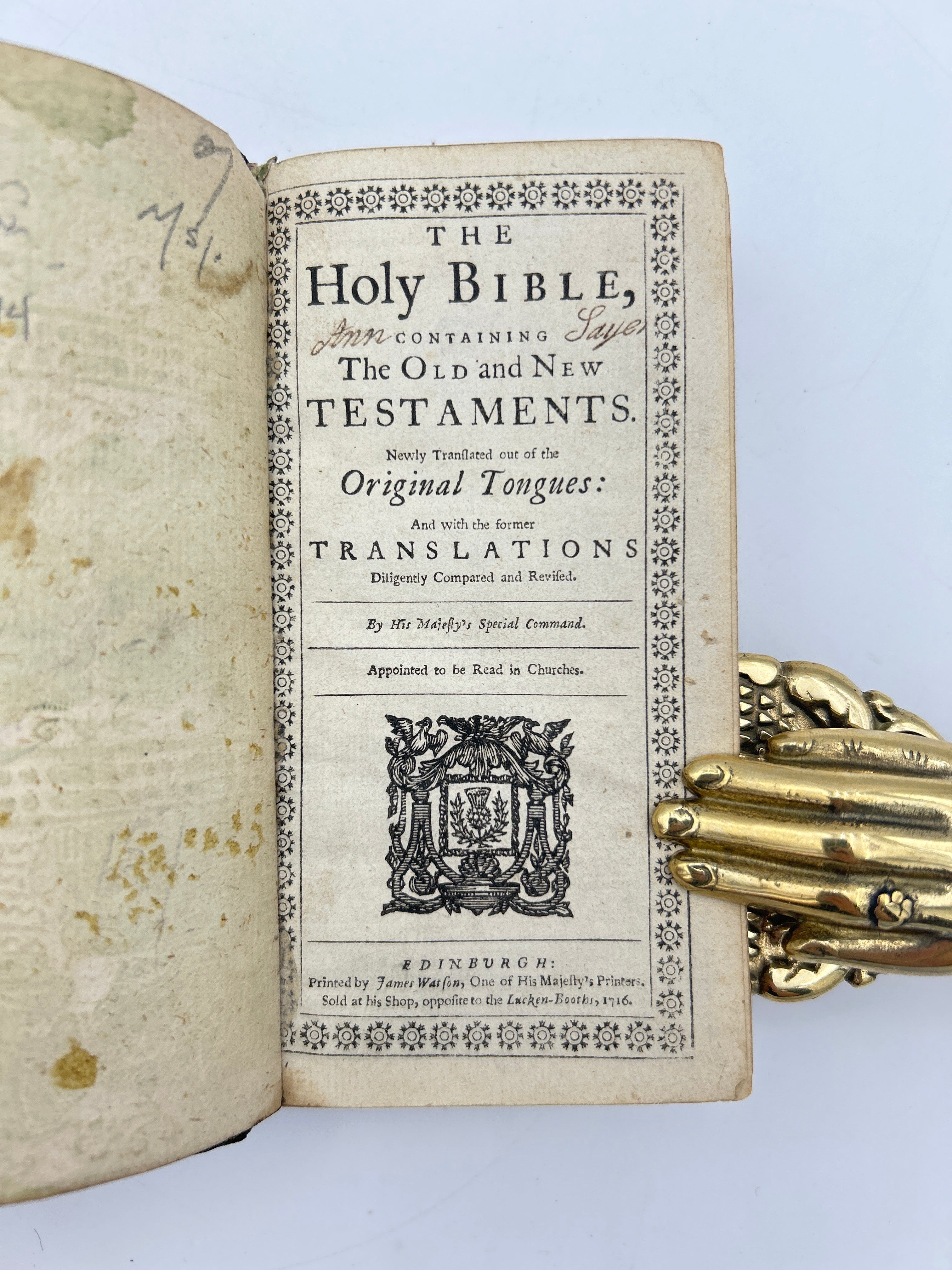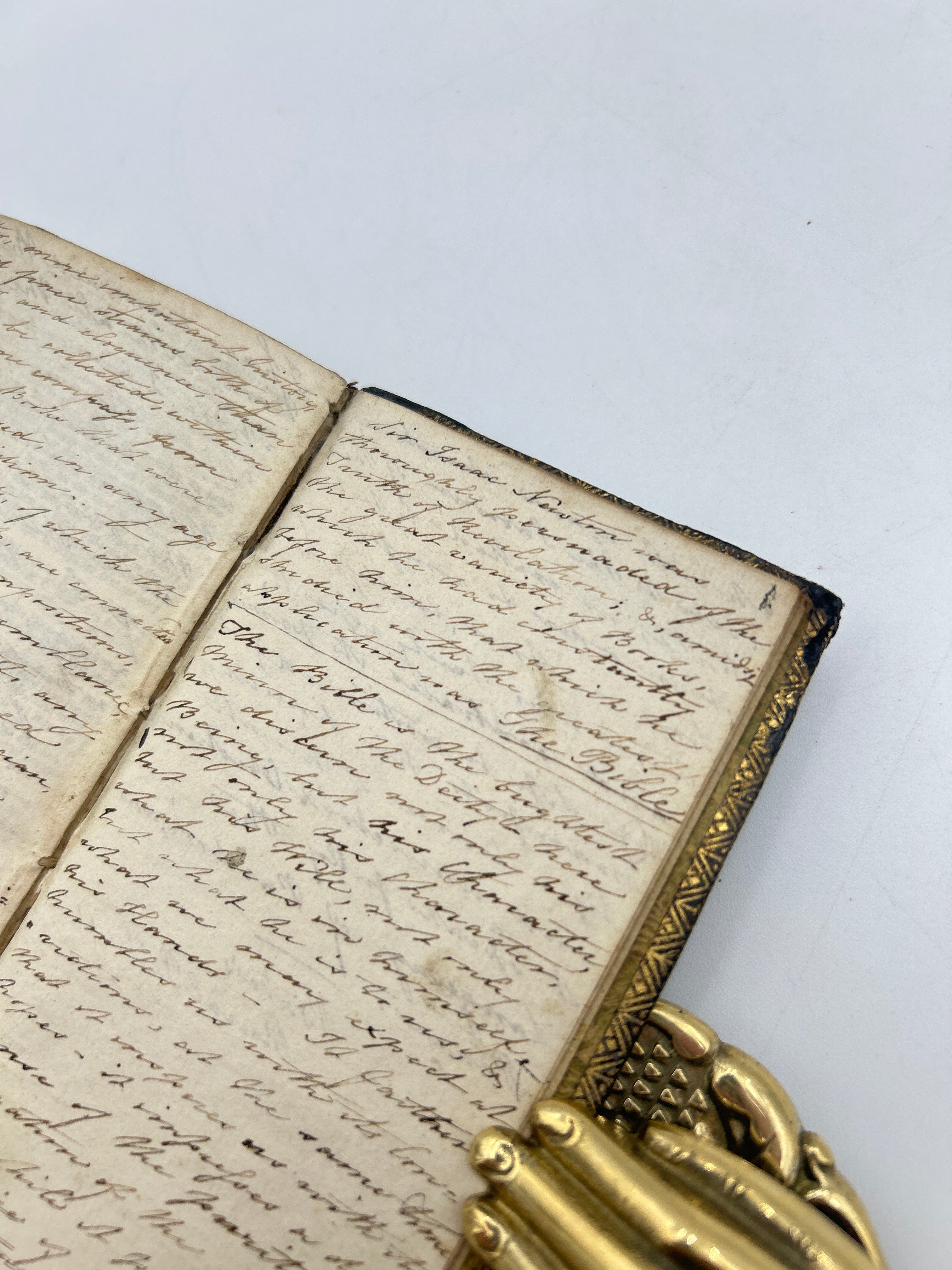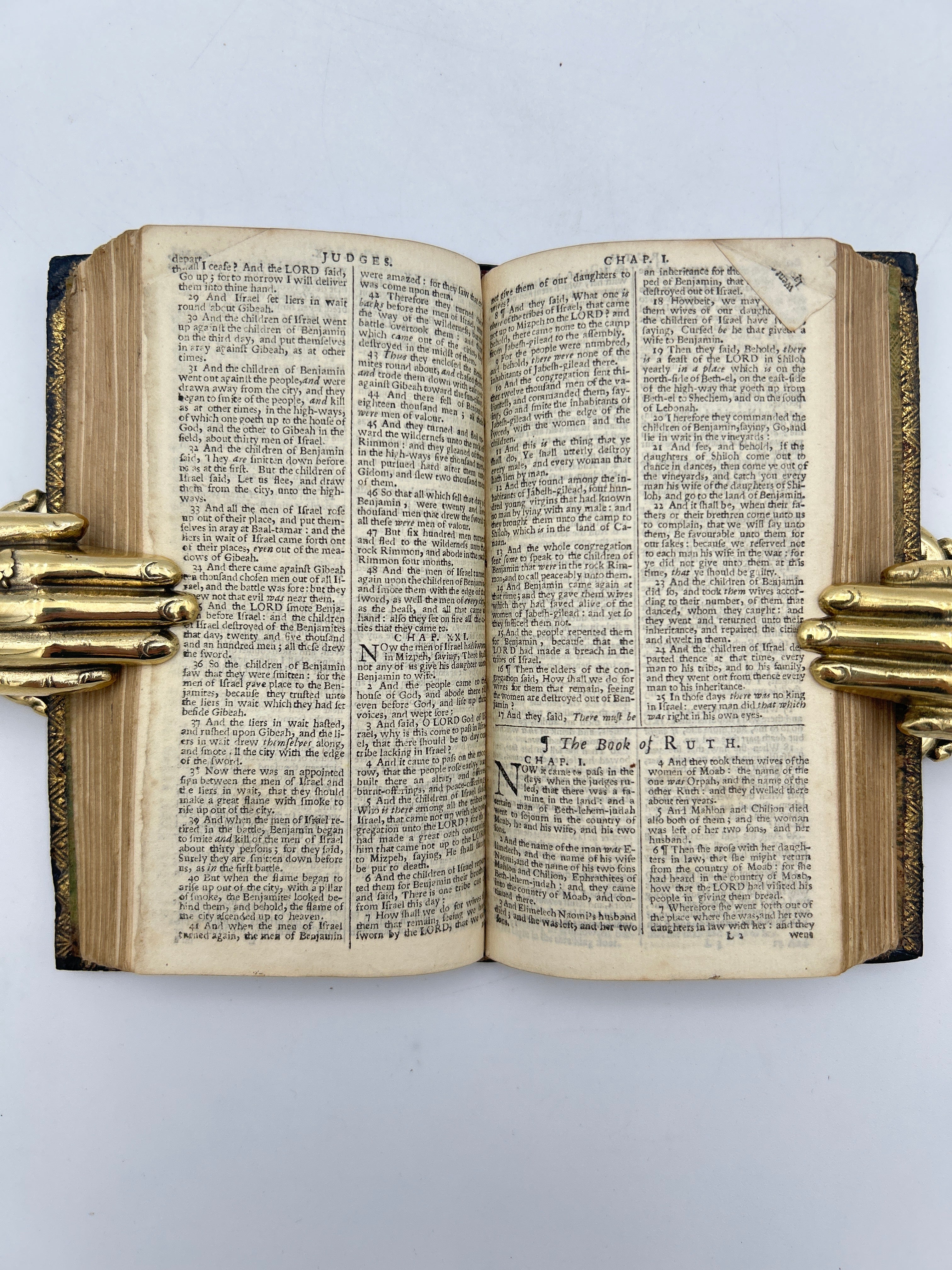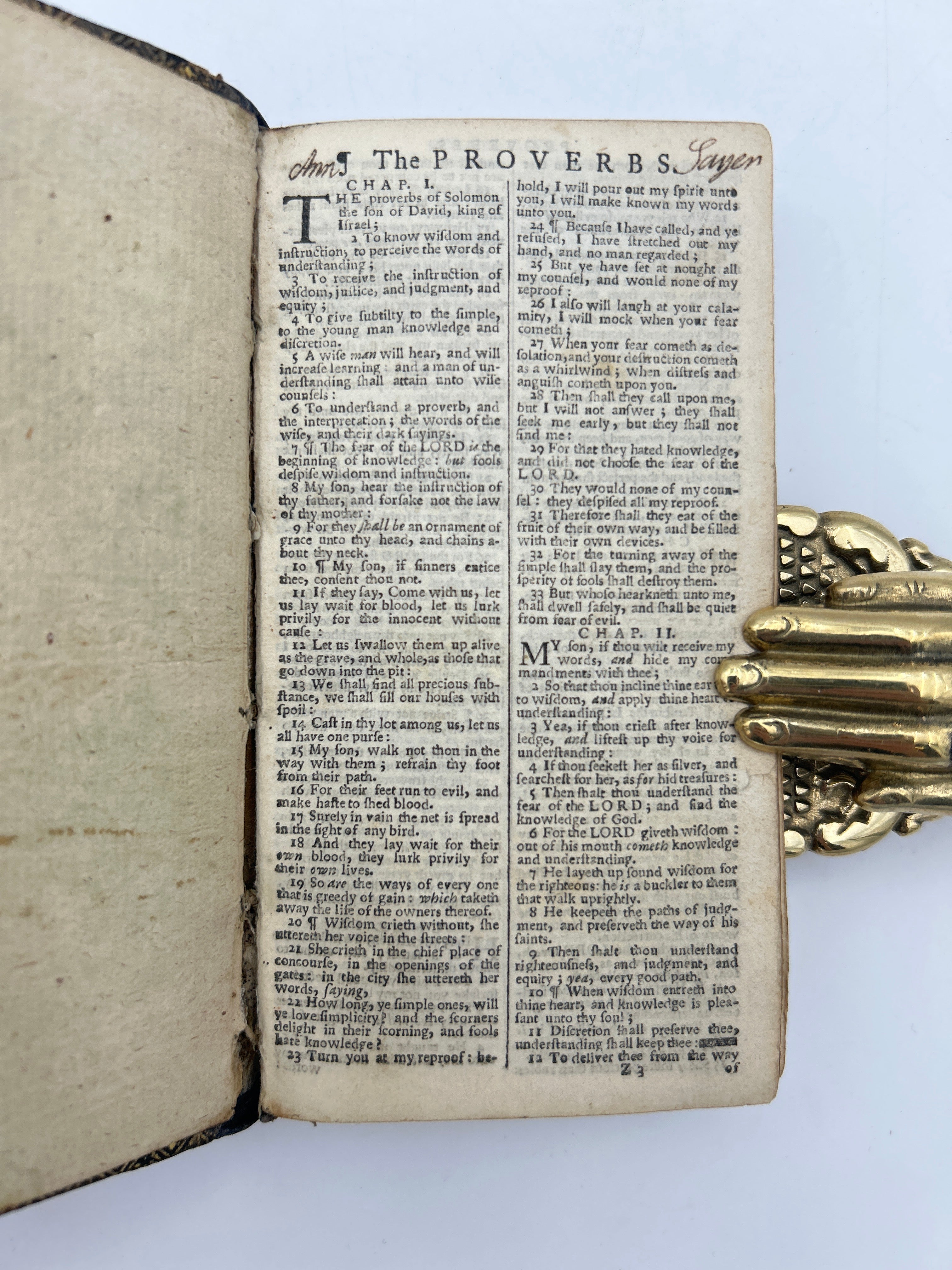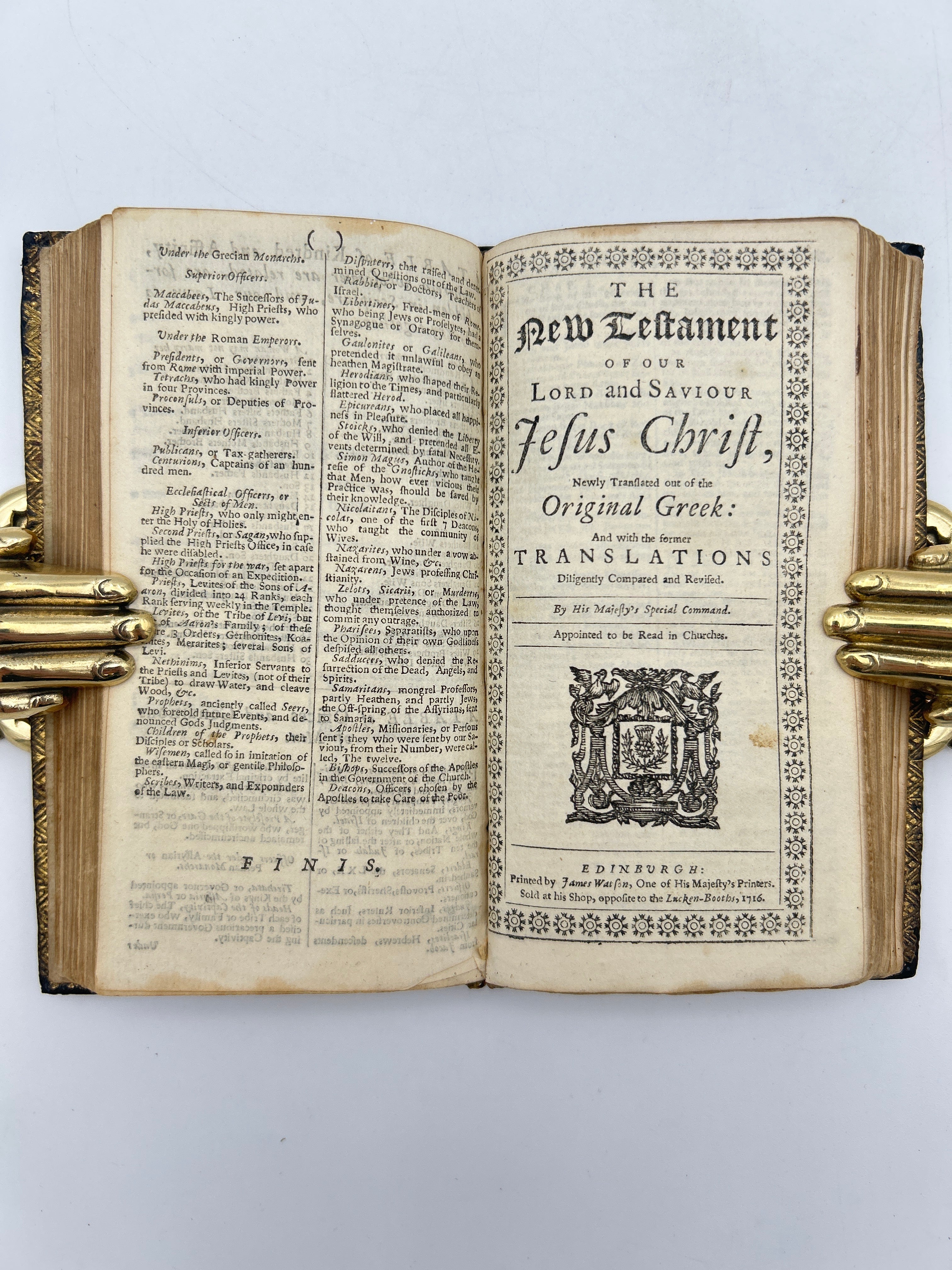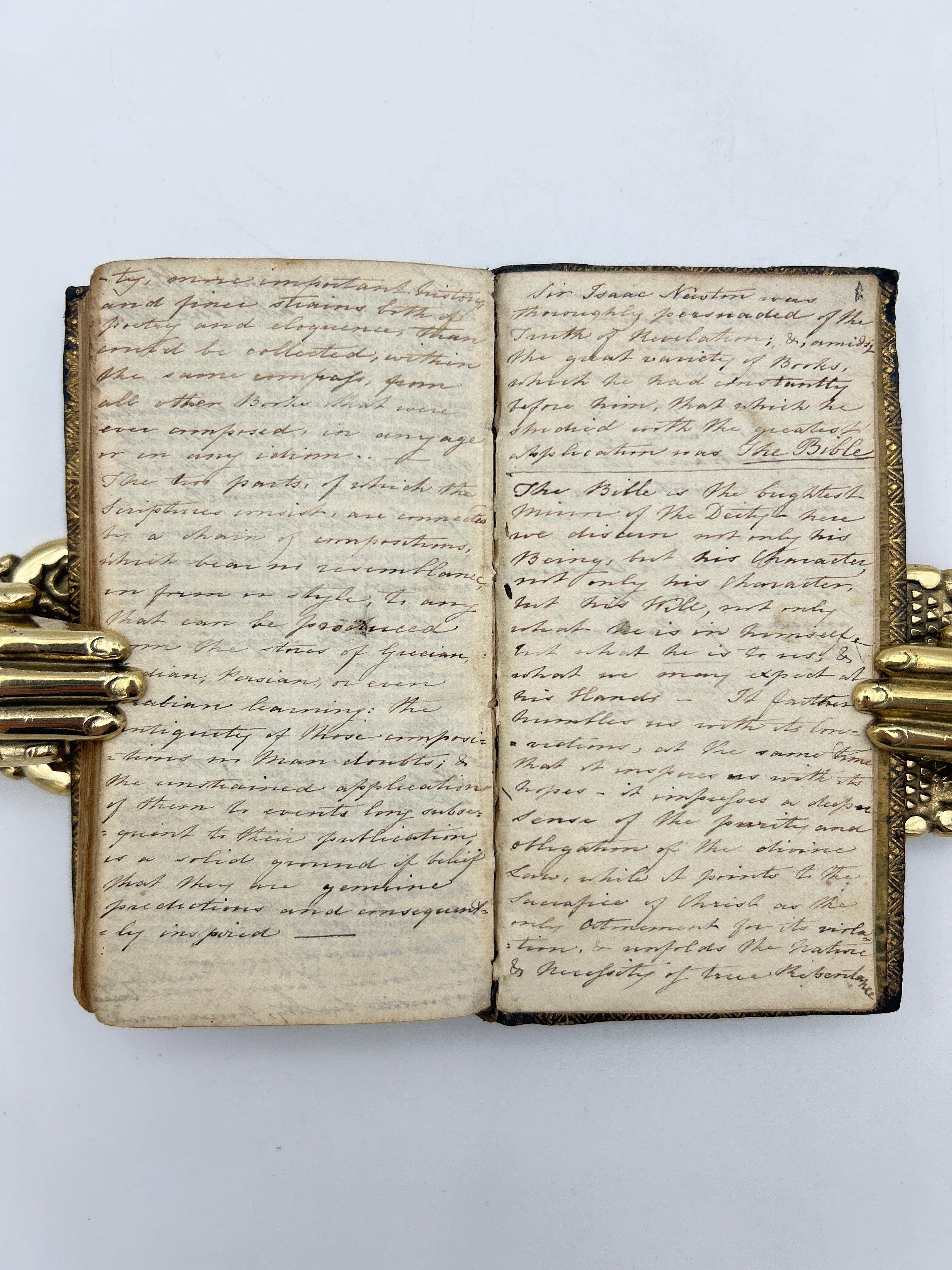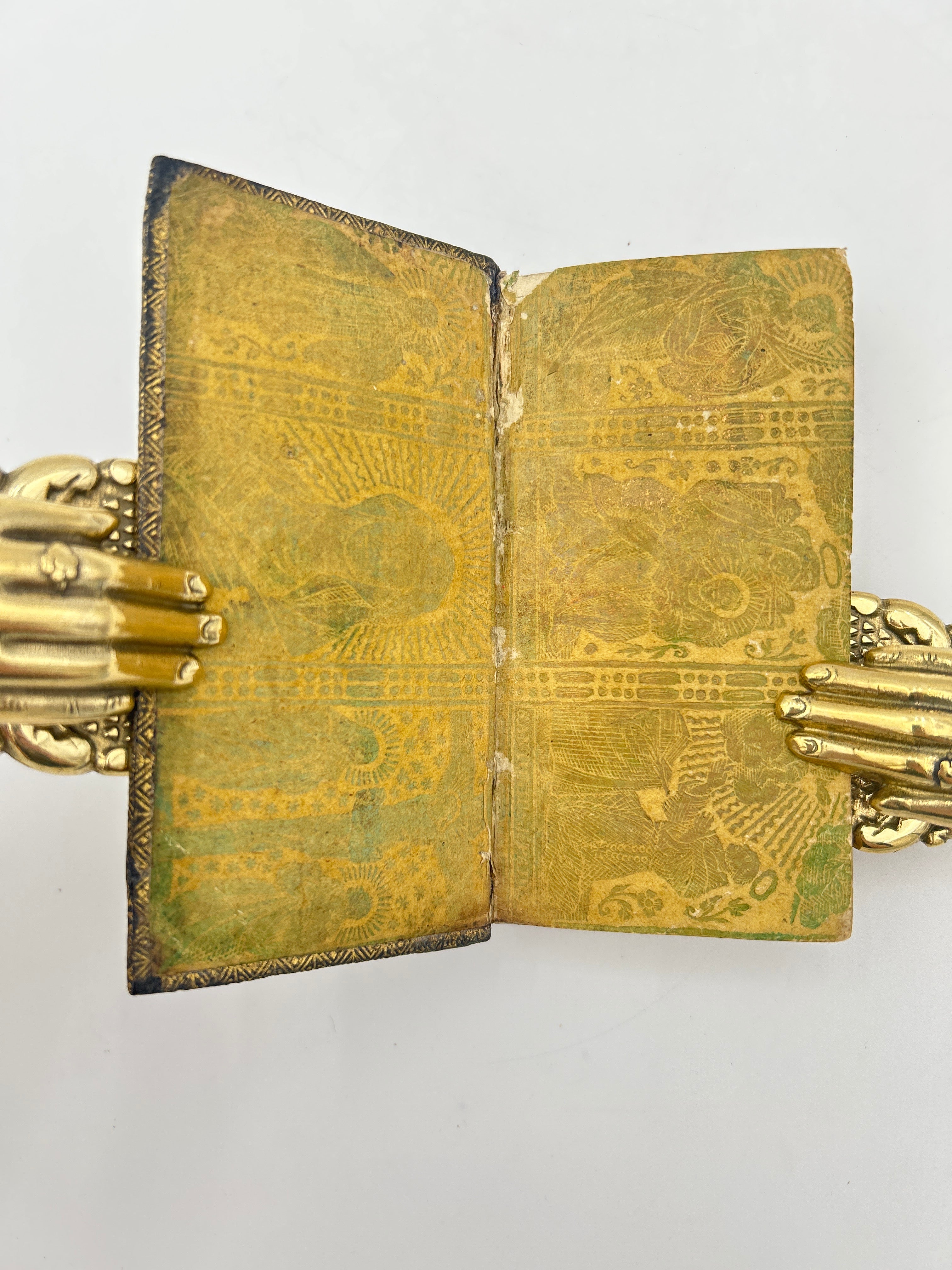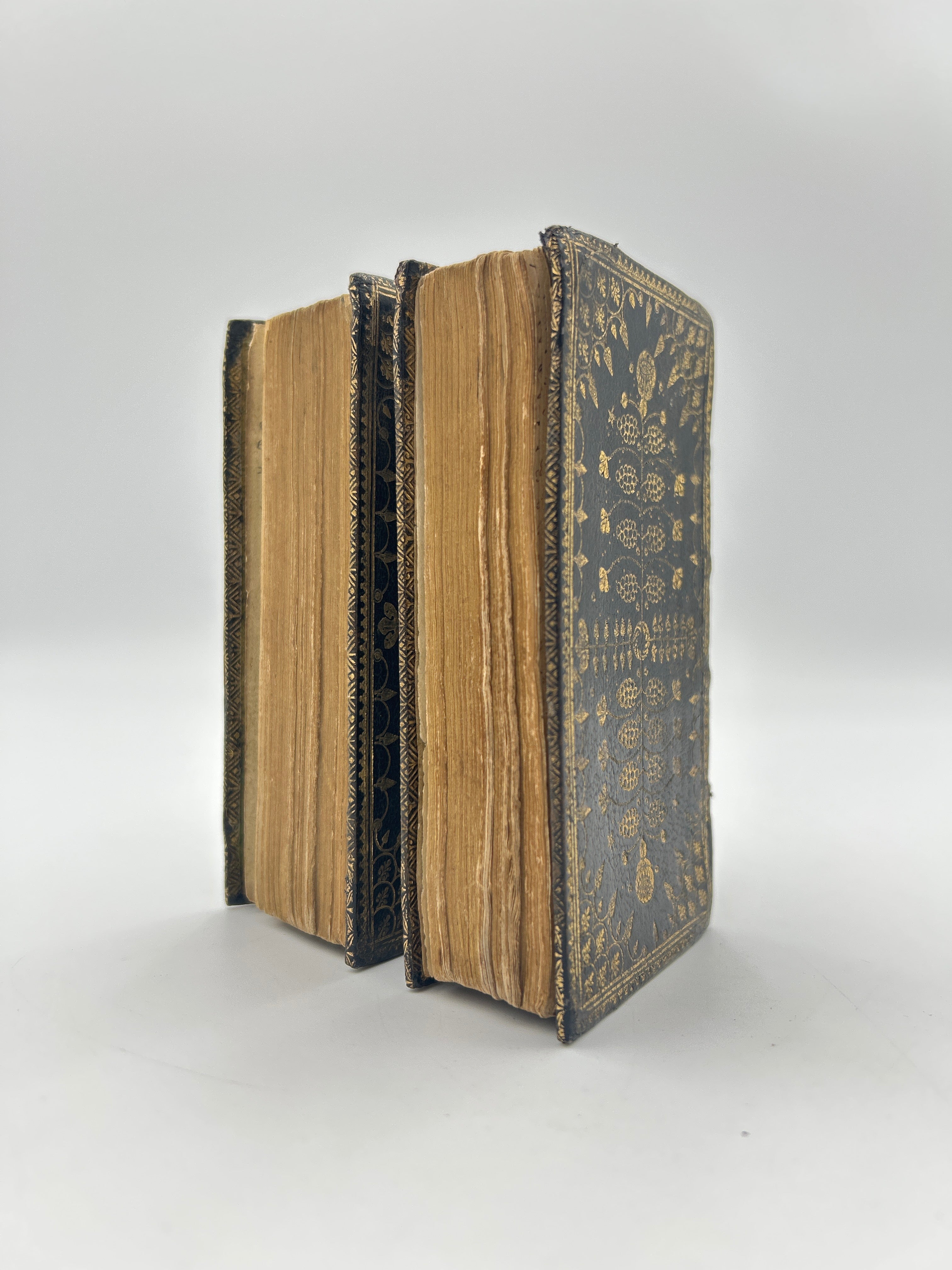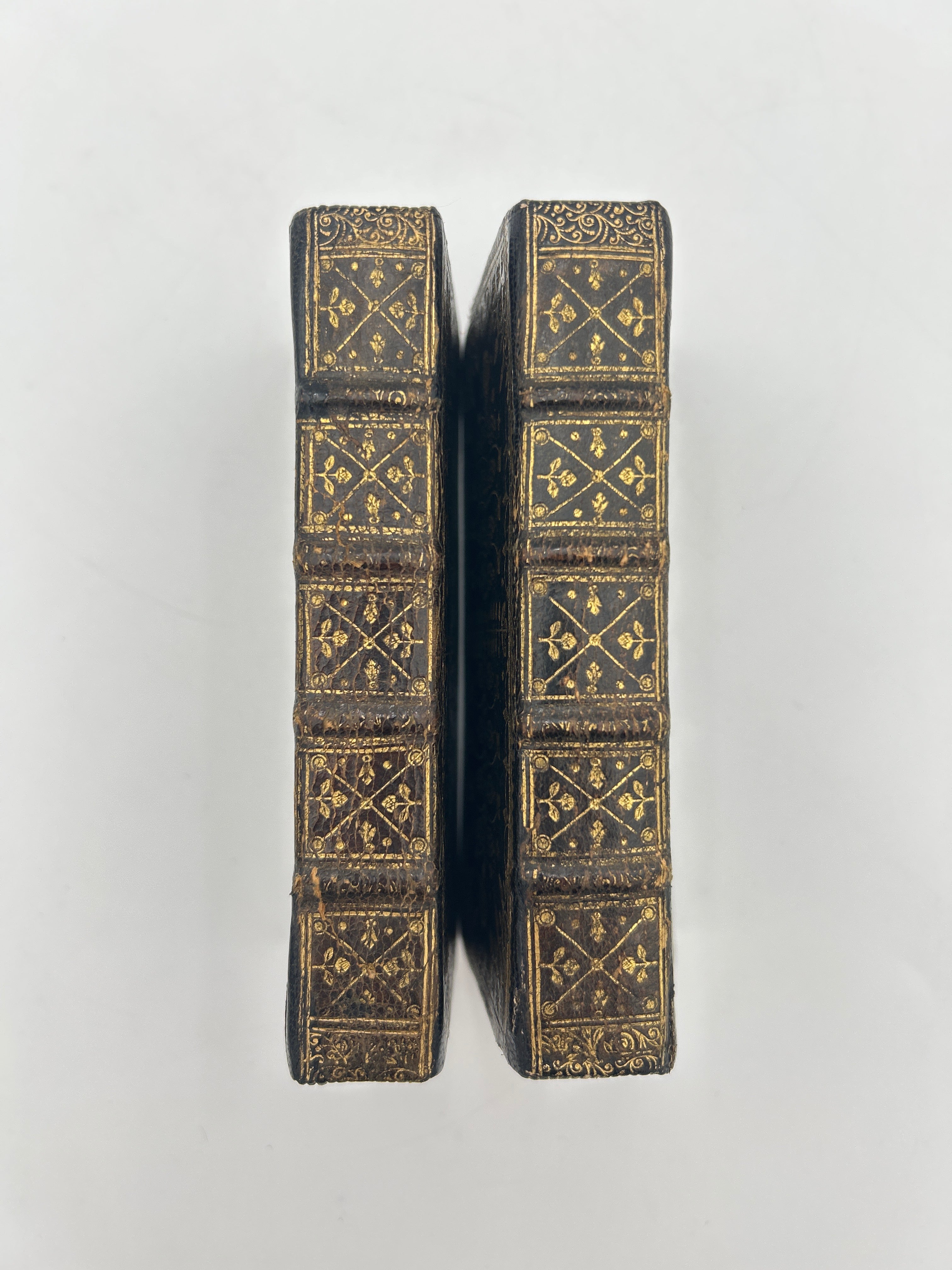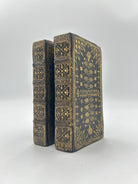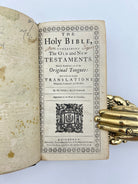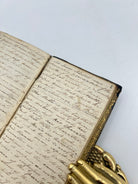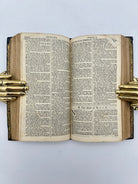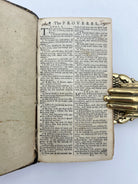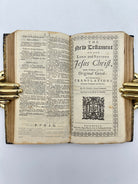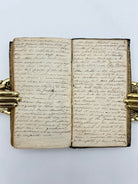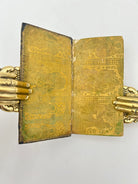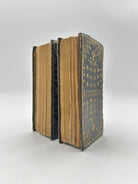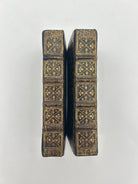Holy Bible 1716
Couldn't load pickup availability
5B Holy Bible with Old and New Testaments. Edinburgh: Printed by James Watson, 1716.
Notes
The Holy Bible, comprising the Old and New Testaments, has served as the spiritual foundation of Christian life for centuries. By the early 1700s, Bible printing had become more widespread and standardized, making Scripture increasingly accessible beyond the pulpit and into private homes. In Britain, both London and Edinburgh emerged as major printing centers. Editions from this era often included elegant typography, durable bindings, and sometimes smaller formats—ideal for personal devotion. The King James Version, first published in 1611, remained the standard English translation throughout the 18th century, revered for its poetic language and theological clarity.
This 1716 two-volume Bible, printed in Edinburgh by James Watson, reflects a distinctly Scottish approach to fine religious printing in the early 18th century. Watson, then the King’s Printer for Scotland, was known for producing high-quality, legible editions often favored by ministers and educated readers. Unlike the larger family Bibles of the time, this set was printed in a smaller, more portable format, making it well-suited for personal study or travel. Its craftsmanship and compact size speak to a period when owning a Bible was not just a religious duty, but a deeply personal expression of faith and learning.
This copy of the Bible has an inscription on the final pages of the second volume upon which the owner of this set, Ann Sayer, writes of Sir Isaac Newton: “ Sir Isaac Newton was thoroughly persuaded of the truth of revelation, and amid the great variety of books which he had before him — that which he studied with the greatest satisfaction was the Bible.”
Sir Isaac Newton (1642–1727) was a towering figure in science and mathematics, best known for formulating the laws of motion and universal gravitation, as well as for his groundbreaking work in optics and calculus. While celebrated as a father of modern science, Newton also devoted much of his life to theology and biblical study. He wrote extensively—though privately—on Scripture, prophecy, and church history, believing the Bible to be a coded text containing divine truths meant to be uncovered through careful analysis. He rejected the doctrine of the Trinity, aligning with Arian views, and saw the Book of Revelation not as mystical allegory but as a historical roadmap outlining the rise and fall of corrupt religious institutions. Newton’s theological writings, which he kept largely hidden during his lifetime, reveal a mind as rigorous in matters of faith as in science—driven by the belief that both the natural world and Scripture were authored by the same rational, divine hand.
Description
Two volumes in contemporary Scottish bindings of black Morocco with covers gilt in herringbone pattern and bunch-of-grape tools radiating from central fillet with wheel deceive to center. Spines with four raised bans and gilt saltire patters in each compartment. Yellow/gold endpapers illustrated with religious scenes. Rear free endpaper is absent. All edges gilt. Some browning and 2N12 has a short tear in gutter. Title page has ownership inscription of Ann Sayer and last four blank pages have manuscript notes about the Bible and other religious books and matters upon them including an observation that Issac Newton “was thoroughly persuaded of the truth of Revelation” and studied the Bible with satisfaction. Very fine condition.
